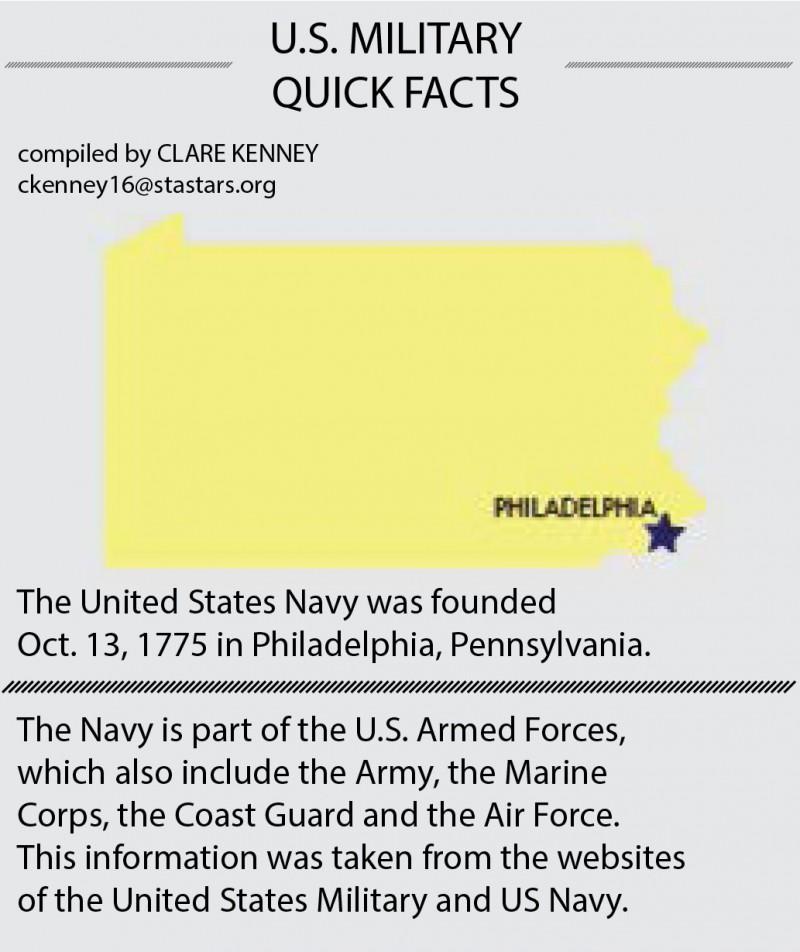by Alexandria Davis, photos compiled by Anna Bauman
Here at STA, we are a blend of many different backgrounds. Both teachers and students alike have their own stories to tell, and science teacher Terry Conner is no exception.
Before coming to STA, Conner worked in the Navy for 31 years.
“I joined the Navy during my junior and senior years in college,” Conner said. “I was looking for what jobs were available, and I happened to see a poster in the engineering building that said ‘Earn $500 dollars a month your senior year.’”
So, Conner applied for the program. After numerous tests and interviews, she got the job.
“[The program] was to teach at the Navy’s nuclear power school,” Conner said. “My major in college was nuclear science and engineering, so [my job] was to teach at the Navy’s nuclear power school once [I] graduated college. “
During her time in the Navy, Conner had many different jobs. She taught physics and nuclear reaction operations at the nuclear power school, worked in the headquarters office and oversaw policy for nuclear-powered submarines and suffer ships.
[nggallery id= 931]
Later, she was transferred to work in nuclear weapons. Then, Conner and her family moved, and she began working in communications of a high-level staff for an admiral, communicating war directions during wartime.
Next, she worked in logistics and was in one of the units that managed ship cargo that included personal property of those in the military as well as weapons and airplanes. Finally, Conner moved on and began to work as a state liaison officer for emergency preparedness.
When she was a liaison officer, Conner helped the military coordinate their efforts after Hurricane Katrina to help rescue people, establish temporary homes for them and hand out necessities. She arrived the day Hurricane Katrina hit and stayed for a month, handing out MREs (individual meals that are ready-to-eat), water and helping set up places for people to stay for the time being.
Conner explains some of the things that she misses and doesn’t miss about being in the Navy.
“What I miss are the people,” Conner said. “At school, I love my colleagues, but we see each other during the day, and it’s not life or death. If I give someone a 60% on a test its not going to kill anyone. But if I screw up in something that I do in the military, I could end up killing someone. The level of dependency on your peers is very different because you know that your life could depend on what they do. I’m not worried about what Mrs. Blake does as to whether I’m going to live or die. What I don’t miss is that if life or death, then it depends on your decisions [and] it is stressful.”
Conner recalls a particular stressful situation that was also one of her first exercises in dependency.
“By the time I was getting out of the military, I was responsible for units of 40 or 50 people,” Conner said. “I was the commanding officer for that unit. One of my very first experiences as a commanding officer of a new unit, it was my very first time being with them, was a field exercise. We did a midnight navigation.”
The exercise that Conner and her unit did involve them being dropped off in the middle of the woods a couple miles outside of their base. The unit had to find their way back to base using compass navigation, while also looking out for pretend snipers. Conner stressed that the level of dependency during this particular exercise was extremely high.
“I had never really done anything like that [and] I had to really depend on the people who were in my unit that knew what they were doing,” Conner said. “But on the other hand, I was the one in charge. So if things went wrong, ultimately it would come back to me. It was a crazy exercise in dependence of each other.“
After 31 years of service in the Navy, Conner retired.
“You can only be in [the military] for a certain amount of time once you reach a certain rank,” Conner said. “I had maxed out the time I could be in for the rank I had achieved, [which] was a captain in the Navy.”
When Conner retired, she began looking for a job, knowing that she was good at teaching physics and technical subjects.
“I looked around at the time when all the schools in the area that were looking for physics teachers,” Conner said. “STA happened to be looking for exactly what I had to offer, so I sent in my resume and the rest is history.”
But after all of her experience in the Navy, would Conner ever want go back?
“Not really,” Conner said. “I loved being in the military, [but] I think you get to a point where you know you’ve done your job and you’ve done your job to the best of your ability.”
Fellow science teacher Renee Blake is glad that Conner can share her life accomplishments and sees them as a great way to motivate students.
“When I first learned that Conner was in the Navy, it just totally blew me away,” Blake said. “I never would have guessed that of her. And when she told me what she did in the Navy as her job and how it linked to physics I thought, ‘What a great role model for our students.’”
For Conner, she is happy to have the experiences she does and believes that the military is a good career field, especially for women.
“Just about five years ago, [the military] has opened up [more positions for women],” Conner said. “There’s really nothing women can’t do in the military, and it’s a great opportunity and a great place to prove what you can do.”








